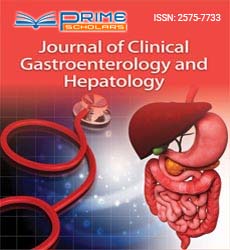Commentary - (2023) Volume 7, Issue 5
The Intricacies of the Abdomen: Anatomy, Functions, and Common Concerns
Jasmine Morgan*
Department of Gastroenterology, University of Toronto, Canada
*Correspondence:
Jasmine Morgan,
Department of Gastroenterology, University of Toronto,
Canada,
Email:
Received: 02-Oct-2023, Manuscript No. IPJCGH-23-18376;
Editor assigned: 04-Oct-2023, Pre QC No. IPJCGH-23-18376 (PQ);
Reviewed: 18-Oct-2023, QC No. IPJCGH-23-18376;
Revised: 23-Oct-2023, Manuscript No. IPJCGH-23-18376 (R);
Published:
30-Oct-2023, DOI: 10.36648/2575-7733.7.5.46
Description
The abdomen, often referred to as the belly, is a complex region of the human body that houses vital organs responsible for digestion, absorption, and storage of nutrients. Comprising multiple layers of muscles, tissues, and organs, the abdomen plays a central role in maintaining overall health and well-being. In this article, we delve into the anatomy, functions, and common concerns associated with the abdomen. The abdomen is divided into four quadrants for clinical and anatomical reference the right upper quadrant left upper quadrant right lower quadrant and left lower quadrant. These quadrants help healthcare professionals localize and diagnose abdominal pain and discomfort. The abdominal wall is composed of several layers of muscles, including the rectus abdominis, external obliques, internal obliques, and transversus abdominis. These muscles provide support, protect internal organs, and contribute to movements such as bending and twisting. The stomach and intestines, located in the abdomen, play a crucial role in the digestion and absorption of nutrients from food. The liver and gallbladder store and release essential substances, such as bile, necessary for digestion. The liver filters and detoxifies blood, removing harmful substances and metabolizing nutrients. In females, the abdomen houses the reproductive organs, including the ovaries, fallopian tubes, and uterus. The kidneys, essential for filtering and eliminating waste from the blood, are situated in the abdominal area. Abdominal pain can result from various causes, including indigestion, gas, inflammation, or more serious conditions such as appendicitis or gallstones. Conditions such as irritable bowel syndrome inflammatory bowel disease and gastroenteritis can affect the functioning of the digestive system, leading to abdominal discomfort. Hernias occur when an organ or tissue protrudes through a weak spot in the abdominal wall. Common types include inguinal,
femoral, and umbilical hernias. Inflammation of the appendix, known as appendicitis, can cause severe abdominal pain and requires prompt medical attention. Gallstones or inflammation of the gallbladder cholecystitis can lead to discomfort and pain in the right upper quadrant. The abdomen, with its intricate anatomy and multifaceted functions, is a cornerstone of human physiology. Understanding the signs, symptoms, and common concerns associated with the abdomen is crucial for maintaining overall health. Regular check-ups, a healthy lifestyle, and prompt medical attention for persistent or severe abdominal issues are essential components of comprehensive healthcare. By prioritizing abdominal health, individuals can enhance their well-being and address concerns before they escalate into more serious conditions. The abdomen, a central region of the human body, is a marvel of intricate anatomy and multifaceted functionality. Home to vital organs responsible for digestion, nutrient absorption, and waste elimination, the abdomen plays a pivotal role in maintaining overall health. In this article, we explore the anatomy, functions, and significance of the abdomen in the context of human. The abdomen is a dynamic region housing numerous organs, muscles, and structures, all working in harmony to support essential bodily functions. Key components of the abdominal anatomy include. Endoscopic procedures, such as gastroscopy or colonoscopy, allow direct visualization of the gastrointestinal tract. Blood tests can assess organ function, detect infections, and identify markers of inflammation.
Acknowledgement
None.
Conflict Of Interest
The authors declare that they have no conflict of interest.
Citation: Morgan J (2023) The Intricacies of the Abdomen: Anatomy, Functions, and Common Concerns. J Clin Gastroenterol
Hepatol. 7:46.
Copyright: © 2023 Morgan J. This is an open-access article distributed under the terms of the Creative Commons Attribution License, which permits unrestricted use, distribution, and reproduction in any medium, provided the original author and source are credited.

